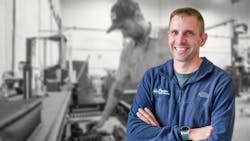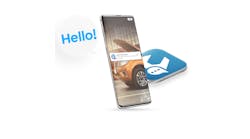On Sept. 23, 2022, California Gov. Gavin Newsom announced his state’s aggressive stance on a zero-emissions future. The executive order unveiled by Newsome aims to ensure California eliminates the sale of gas-powered vehicles by 2035. “This is the most impactful step our state can take to fight climate change,” Governor Newsom.
This announcement sent shockwaves throughout the auto care industry because California has long led the nation in making environmental decisions that have rippled across many states in the country. The decision by Gov. Newsom promoted California Air Resources Board (CARB) to approve the Advanced Clean Cars II regulations, which would require independent repair shops to have the “same service information and repair procedures from OEMs as they have with current internal combustion engine vehicles” as stated by an Automotive Service Association news release. This regulation was met with cheers across the auto care industry as it would prevent OEMs from cornering the electric vehicle repair market on independent shops that otherwise would have been left behind in the transition.
Where does this leave independent auto repair shops? As mentioned, California is the litmus test by which other states legislate climate and if other states adopt California’s precedents—12 have expressed a desire at the time of this writing. For shop owners, it’s going to begin with accepting the future and transitioning into the present. But the question remains: are shop owners sold or skeptical of the electric future?
‘Hybrids are a Really Great Learning Stepping Stone’
In a story reported by the Sydney Morning Herald on March 30, 2011, Microsoft's global chief research and strategy officer Craig Mundie stopped short of saying that tablets, such as the iPad, could be a flash in the pan. He hedged his bets on smartphones being the global leader in personal technology. While his assessment on the former holds true, the latter did not. In the third quarter of 2022 alone, iPad sales are $7.22 billion. All this to say that if shop owners today dismiss electrification as a fad, revenue will cease, doors will close, and jobs will be lost by 2035. Electric vehicles are here and within the next decade will arrive in your bays. The time for readiness is now.
Carolyn Coquilette, founder of Luscious Garage, a hybrid repair shop in San Francisco was an early adopter to hybrid repair when the Toyota Prius was a toddler within the vehicle landscape. The technology behind the vehicle drew her from Michigan—where she earned a bachelor’s degree in English and physics— to California where she could be exposed to a higher concentration of hybrids firsthand.
“I was automatically drawn to the hybrid platform because it took some of the aspects of applied physics that are on all cars and really beefed them up. Instead of having a low voltage system, you had this high voltage system; you had this massive electric motor, you had all the control electronics and power electronics and stuff. It was really interesting to me,” says Coquillette.
After gaining some experience working on hybrids, she opened her shop. At the time, hybrids were still a new technology and the design of the vehicle—take the Toyotas Prius or Honda Insight—was cartoonish, a turn-off for some consumers. For Coquillette, whose market research data returned a promising consumer reach, it was go-time.
“And at the time that we opened the shop … the cars were so new. We really didn't know if they were going to break. We didn't really know much about them. We didn't call ourselves experts because we realized we weren't experts. But we also had the defensibility that because the cars hadn't started breaking yet, you didn't have to know what was going to go wrong with them in advance. Like we had plausible deniability,” says Coquillette.
It’s that first concern that caused much of the industry to take the stance of Microsoft's Mundie. The cars were too new. The technology did promise longevity. But the skepticism was deeply seeded in the industry. But Coquillette took the gamble, and it paid off. The cars broke. The people came. The shop thrived. She’s a perfect case study for adopting new technology. And as the auto care industry faces the electric car revolution, her footprint can be the blueprint for many shops looking to make a successful transition into EV repair now.
“I do think that hybrids are a really great learning stepping stone to be able to get into electrics,” says Coquillette. “When I do training on adapting your shop towards hybrids and electrics, I tell people that they should just go buy some Prius with 300,000 miles on it that's just trashed. It's the best $500 training course you're ever going to get just being able to drive that car, look at the scan data, rip it apart. Just get your feet wet on it.”
And she understands the struggle shop owners face. They want to see the data; they want to know what to prepare for. But like she believed with Luscious Garage, the handwriting was on the wall, and it was a matter of time before hybrids were filling the bays.
"For shop owners looking at this, it isn't, 'Oh, it doesn't have a tailpipe.' It's, 'How the hell am I going to make any money on that car?' And so, when we started on Prius, it was like, 'Is this car even going to break? Is this car going to need anything at all?' And the answer is yes. But it takes 150,000 miles for it to need a set of front brake pads. You just have to wait a heck of a lot longer to replace those brake pads and it means that you have to have a high car count, low average ticket model,” Coquilette says.
Technical expertise also plays a role. Shops choosing to use hybrids to transition into EVs should have techs trained properly to do the service. Failure to do so is costly for the shop and the customer.
“Hybrids introduce a complexity where, if you're not familiar with how that car works, it's easy to cross a threshold that you're not aware of, and suddenly you don't know what you don't know. And it manifests in all sorts of weird ways,” Coquillette says.
She says technicians need to be aware of how the transmission works and what to do when it misfires and creates disharmony within the engine. Techs also need to understand the diagnostic tools, the codes, and other sensitivities isolated to hybrids which can often be misdiagnosed as a battery failure by those without proper training.
"The hybrid component is actually a little bit more sensitive, in terms of making sure that you know what you're doing and being appropriately trained. And whether that means [as a shop owner] that you don't expect general knowledge across all of the technicians in your shop, you want to dedicate one person to sort of really kind of go deep, that might be advisable,” says Coquillette.
On the consumer side, unlike EVs, hybrids are common. The new and novel appeal means nothing to the consumer, which means for the shop looking to take in that work, marketing needs to focus on the needs of the consumer to maintain a well-driving vehicle and not the novelty of the vehicle.
"If you were to like hang a shingle and say, ‘Hey, we're hybrid people now’ like, how many people would actually resonate with that? How many people give a shit that they're driving a hybrid anymore? It's like breathing air. So now you have to figure out how to say yes to hybrid cars,” Coquillette says.
The electrification leaves many shops facing an adapt-or-die reality and automakers and legislators are betting the farm on zero-emission policies aimed at reducing the footprint of internal combustion engines, if not wipe them out entirely. This means shop owners need to adjust their business models to match the vision of those two groups or lose market share.
“I think you need to budget a certain amount of your attention on your business, on the future of your business, and ADAS and EVs being an obvious part of that, and just figuring out how to make sure that you're positioned to respond to those things,” Coquillette says.
‘The Longer You Wait, The Harder It Gets’
Roughly 11-and-a-half minutes into the TEDx speech that launched Simon Sinek into the entrepreneurial thought leadership stratosphere, he scribbles a bell curve in black marker on an easel pad, circles two intersecting data points, and says, “If you want mass market success, or mass market acceptance of an idea, you cannot have it until you achieve this tipping point—between 15 and 18% market penetration—then the system tips.”
That 15% to 18% he mentioned represents the gap between early adopters and the early majority of market consumers. In the auto care industry, early adopters are the original Tesla owners, who purchased the revolutionary Roadster in 2008 and 2009. And despite the rising popularity of EVs, the vehicles are still in the early adopter phase as 1% of cars on the highway are EVs. That said, shop owners who haven’t considered hybrids or have worked on them sparingly would be wise to begin now. Those not sure where to begin can seek training.
Craig Van Batenburg, CEO of Automotive Career Development Center in Worchester, Massachusetts, provides hybrid and EV training for shop owners and technicians. A former shop owner for 26 years, Van Batenburg has spent the second half of his career teaching auto technicians and shop owners about hybrid and EV repair. He says he “drank the Kool-Aid” and became an environmental technician before it was en vogue—back in ‘72—while training in New Jersey with American Honda.
"I'm 20 years old and participated in a weeklong training for American Honda. It was just now selling automobiles, and the first four hours of class on a Monday morning had nothing to do with the Honda Civic. We're talking about the EPA, which was created in 1970. Regulations had just been set and [we discussed] what's going to happen going forward. They talk about lung disease and carbon monoxide poisoning and death and mayhem and science about exhaust emissions, which were not regulated at all at that point, and how we're all going to die, and oil is bad, and cars are terrible,” says Van Batenburg.
That talk left an impression on him and by 2000, he became an early adopter of hybrid vehicle technology, and in the 2010s, electric vehicles.
“I start teaching hybrid vehicles because I bought a Honda Insight back in 2000 when they first came out. I shut down everything and go specializing strictly in hybrid training internationally. And electric cars showed up so in 2011, so we bought a Nissan Leaf and a Chevy Volt and started teaching electric cars. And presently we run a company based out of Massachusetts that exclusively teaches anybody who needs to know the technology on electric and hybrid cars,” says Van Batenburg.
He says the learning curve today for shop owners is more akin to a y-axis. “You're going to have to get on a Saturn booster and get shot straight up in the air. The learning curve is no longer a curve. It's a rocket ship heading straight up,” says Van Batenburg.
“They waited 22 years. Let's start with that. The longer you wait, the harder it gets. Every time you wait, another car comes out.”
Like Coquilette, he recommends an emphasis on beginning (or continuing) hybrid work while learning the ins and outs of electric vehicle work as training becomes available citing the aftermarket position of working on out-of-warranty vehicles, a category which many early hybrids fall into.
“The aftermarket always works on the old stuff,” says Van Batenburg.
He admits that many shop owners remain skeptical about the role electric vehicles will play with consumers and within the aftermarket and others fear or reject the technology outright. He boils it down to fear of death, fear of change, and mistrust of science.
“Probably No. 1 is fear about getting killed because they hear all about how these orange cables will kill you, which is overblown. There's more danger in a gallon of gasoline than any electric car I've ever seen. That's No. 1. No. 2, not wanting to learn something new because you're getting older. No. 3 is they don't believe in science; climate change is not real … and so this whole electric car thing is a bunch of baloney. Their mind’s made up,” says Van Batenburg.
He says he had his doubts about the sustainability of hybrids, but once they became a staple in the market, he knew EVs would follow suit.
“I thought the Prius would fall on its face,” he says. “And when electric cars came out, I thought, ‘That's not going to work.’ But I don't know anybody who could deny it today.”
Van Batenburg says ignoring electric vehicles now is a huge risk. While there is no money in electric cars for shops in the immediate future, shops need to carve out a presence in the market as time passes.
“You start with hybrids because there's money in them. Learn all about hybrid cars, [since] the bridge between a good hybrid technician and EV technician is very short. That Prius pays the bills because they have internal combustion engines. And they're getting older and they're out of warranty and they're going to break like every car breaks. So, you start with hybrids for sure. You add EVs when you think you're capable,” Van Batenburg says.
For shop owners looking to get up to speed on EV repair, Automotive Career Development Center offers in-person, two-week intensives that get the ball rolling.
“A shop owner has to commit to two weeks for the technician to be here … and then they come out and do a lot of training ahead of time. Once they graduate from this two-week school of ours, the shop owner can get involved with what we call QSP, Qualified Shop Program. That's continual training and tech support for the technician when they get back to the shop, including a whole list of what they need to own,” Van Batenburg says. “Then they're off and running.”
As the 2035 zero-emissions concept expands beyond California and New York, shop owners staring down the barrel of this aggressive shift towards electric vehicles would be advised to not see electric vehicle adoption as a fad and thus make the error of Microsoft’s Mundie. Van Batenburg says at this point, about 5% of U.S. shop owners are fully engaged and accepting of the electric future. He says they want to learn now, realizing in the long run it will be more expensive not to because they'll eventually go out of business. And all other repair shops will close their doors, or do it because they’re forced to, to which Sinek said of that group, known as the laggards, “… only bought a touch-tone phone because [they] can’t buy a rotary phone anymore.”
‘This Stuff's Not Going Away’
You’d have to go back to the late ‘60s and early ‘70s to find the last big public outcry for electric vehicles. The skyrocketing cost of gasoline created a renewed interest in EVs, a craze that waned by the end of the '70s. It wasn’t until 1997 when Toyota released the Prius that the idea of road-ready electric vehicles could be imagined. That's what sold Coquilette and Van Batenburg. The Tesla Roadster and the Nissan Leaf came a little over a decade later and landed on the radar of many early adapters.
One of them was Joe Pegararo owner of Pegoraro Auto Repair in Vancouver, Washington.
“You see the ads, you read the articles, you read some of the different things and from there, I started researching it,” says Pegararo. "You get the bug in your ear, and you start kind of looking at it like, “OK, what is this? How does it work? Why is it important? Where's it going.”
He believes shop owners should take a lesson from past vehicle technology advancements and not repeat the skepticism of shop owners 40 years ago. Back in the ‘80s, it was fuel injection that got the ball rolling towards making carburetors obsolete by the mid-'90s despite the initial skepticism. Pegararo says the lesson with EVs is the same—they're here to stay.
'This stuff's not going away, it's not, so you might as well learn it now why you can while you can grasp the basics and you can go through a learning curve when it's not all your vehicles coming in the shop,” Pegararo says, adding that shops who wait will be in a jam when the aftermarket shift.
“Learn it now when it's not making up the bulk of your market or your customers. If you wait and all of a sudden it's 80% of your business and you didn't learn it, you're going to be in a world of hurt, because you're not going to be able to turn the vehicle fast enough.”
Pegararo believes in the technology. And though he’s worked on some hybrids and fewer EVs, he believes in preparation, and he wants to be ready with knowledge, training, and workspace technology. His shop is 3,000 square feet on the tech side with an additional 1,000 square feet of space dedicated to his parts room and diagnostic work. Right now, he’s diving headlong into ADAS work, something 17% of shop owners polled in the Ratchet+Wrench Industry Survey say they’re equipped for, but 61% want to invest in within the next five years.
“We have one bay for the diagnostic and then four hoists in the tech area, but five bays. And then basically one big bay where we do ADAS. It's not really an area where we do a ton of work, I guess you would say it's more like electrical stuff, and that is programming so far. I think it's extremely important,” Pegararo says.
His advice to shop owners: start with ADAS.
“I think ADAS is going to be one of the most important ones. I mean, you're truly not supposed to even do an alignment and check the car out without doing a camera recalibration. So, I would say that [ADAS] would probably be the first thing to start learning about because I think that one is going to get more and more complex as you have self-leveling headlights. [If you don’t] you're not even going to be able to do headlights. So, I would focus first on ADAS and then the next step would be EVs,” Pegararo says.
In creating a shop that’s ready for the future, where shops embrace the coming change, Pegararo thinks it's up to shop owners to educate themselves and their customers about EVs, knowing that the dealership-based warranty model will work in a similar fashion as it does with internal-combustion engine vehicles and will send EVs into the aftermarket for repair at independent auto shops.
“I think a lot of it is going to be customer experience and projecting that image of confidence to the customer. I think as an industry where we'll start seeing more EVs not going to the dealership is that second owner. Talking to our existing customers that are going to be that second owner, that's where we're going to start seeing the market shift a little. Where that person that's buying it doesn't have that Tesla experience,” Pegararo says.




